You may have heard of 301 stainless steel coil or 301 stainless steel strip. Or you may know something about it and know what it has to do with the spring steel strip. After all, for the spring industry, 301ss has always been a trustworthy steel grade.
Since 301 stainless steel was produced, it has been known for its excellent ductility. It is widely used in industries with elastic demand for raw materials. For 301 stainless steel strip, yaoyi has 25 years of production experience. Has been committed to providing you with the best quality 301 spring steel strip.
The 301ss strip produced by Yaoyi is widely used in springs, clamps, buckles, and other industries. Even relying on it, it has become the only overseas supplier of the world’s Fortune 500. If you need to purchase it, you can have the best supply system.
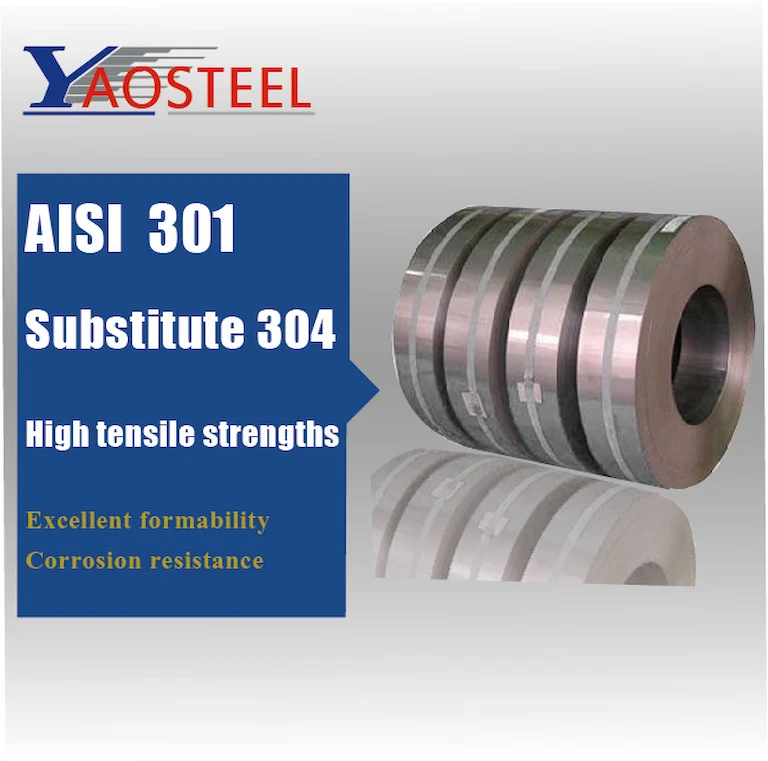
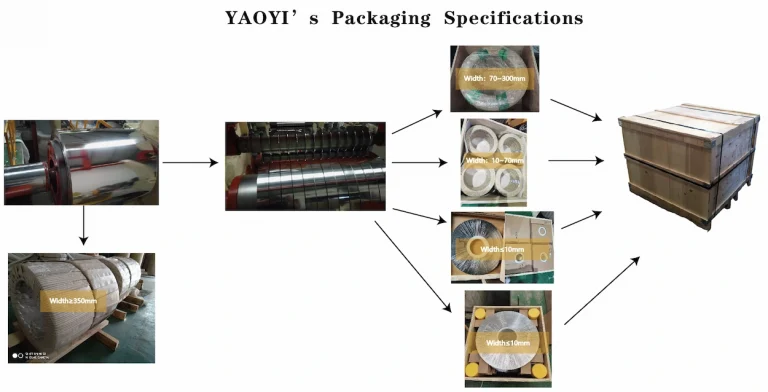
The austenitic steel 301 stainless steel strip with outstanding corrosion resistance and high-temperature capability is a stainless steel strip. Due to their strong thermodynamic properties, such as thermal conductivity, particularly thermal power and the linear expansion coefficient, these SS strips are in use in many industrial applications.
Besides, the 301 stainless bands and slit spools in chromium and nickel material are smaller than Type 302. Stainless steel strip type 301 operates more quickly, with less nickel content maintaining greater ductility than the same Type 302 temperature. 301, The height of the strips 0.0019′′ 0.050′′ precision slots at 0.024′′ and 12′′ widths. Stylish strip Gibbs inventory. A wide array of temperatures are available in a range of hard 30 1/4, 1/2, 3/4 hard, complete, maximum, and high yields 270 ksi min and 301 high silicone stainless steel band.
Non-magnetic Stainless Steel strips are very common in food industries, cement,t and gas, chemical, power generation, wafts, pharmacy, and others. Apart from its non-magnetic properties, the SS 301 Strips provide outstanding electromagnetic properties such as magnet permeability, electrical conductance, and a young module.
Thus, the 301 grade of stainless steel is standard in austenitic with good resistance to corrosion and high carbon to allow cold work to propagate temperatures. It can be tough, rough, and hard inside 1/4. Stainless steel of type 301 has a durability of a minimum of 185,000 PSI and an output power of 140,000 PSI.
301 stainless steel coil is also supplied in many strips and cables, hardness up at 1800 Mpa, to temperatures ranging from 1/16 Hard to Full Hard.
Also, the 301 series could be included in boats, rail, and architectural parts. Tempers of this class, from 3⁄4 until totally rugged, can be used in applications with high wear resistance and spring features with simple designs.
Grade 301L, that is, the low carbon grade 301 variety is suitable for strong ductility applications. Another variant is Grade 301LN. This includes the next proportion of nitrogen which is higher working hardness than norm 301.
Also, the full range of SS strips available in 301 Strips in hot rolling stainless steel and cold rolling stainless steel. These two strips are in production following Indian and international norms. To find out the latest prices of the strips please contact us today. All goods ship on schedule at fair prices at the requested venue.
Sonic steels, on the other hand, are a leading maker of stainless steel strips, exporting and producing 301. The SS 301 strips are on the market in different forms and sizes, according to the specifications of the consumer. These 301 ribbons of stainless steel are identical to carbon steel ribbons which are heat treatment systems.
In chromium and nickel content 301 stainless steel coil, ASTM-A-666, are marginally lower than Form 302. Type 301 stainless steel strip works faster and retains better ductility than the same temperature of type 302 thanks to a lower content of nickel. 301 Gibbs Stainless Strip stocks in the gauges 0.0019′′ to 0.050′′ accuracy slit in the widths 0.022 to 12′′. In a range of temperatures, a Type 301 stainless steel strip is available.
Furthermore, ASTM A-666 for special applications which require additional hardness and strength 301 Higher Yield or Extra Full Strong. A minimal tensile strength of 270,000 PSI has this extra high resistance material. Gibbs stores 301 high yield strip in the range 0.002′′ to 0.032′′ accuracy slit by 0.0019′′ widths. AMS5519 – Chemical properties only is in grant for Type 301 High Yield.
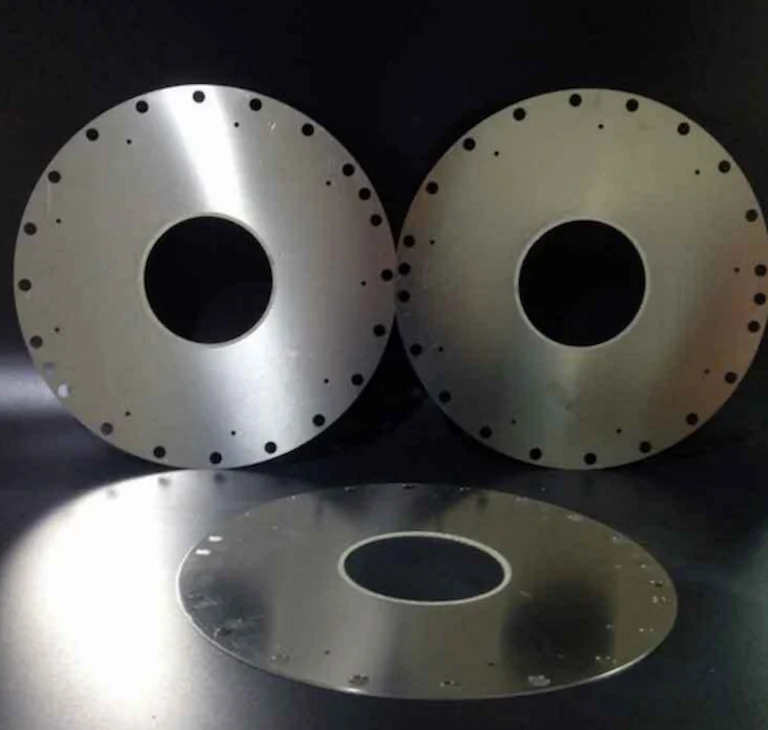
The sturdy steel strip of type 301 is austenitic. The high strength and ductility of this stainless steel is after the cold operation. Like 201 steel, 301 is not magnetic in the annealed state with the cold operation and is increasingly magnetic. But it’s just marginally magnetic in the end compared with other regular austenitic stainless steels.
The carbon max. 0.15, Manganese max. 0.045, Phosphorus max. 0.10, Sulfur max. 0.030 and Silicium max. 0.75 and Chromium 16.00 – 18.00, Nickel 0.10 max.
Density: 7,78 g/cm3, 0,285 lbs/in3, Electric resistivity: BTW/lb/°F (kJ/kg•K): 45°F (0-100°C), 34°F(0-27°C): 0.112. Electronic resistance: Microhm-in (microhm-cm), 68°F (20°C) (0.50). < 1.02° max: 2250-2590° F (1399-1421° C). Melting scale. < 1.01 degrees C.
The higher carbon and lower nickel content of the 301 stainless steel strip help positive characteristics of drawing and formation. However, the corrosion resistance is less compromised by this composition.
Further, corrosion prevention involves a secondary annealing procedure for stainless steel 301. The secondary method destroys the carbides of chromium and the soil coloring and restores the corrosion resistance of 301 stainless steel strip on soil or laser cutting edges. The secondary process
The steel band 301 is a 304 change in shape which lowers chromium and nickel content. This allows higher tensile forces to roll with less ductility loss simultaneously than with Type 304.
Grade 301 stainless steel strip is commonly in use for the production of heat treatment-free materials, springs, and molded sections.
Also, it is in use for dental instruments, scrapers, shims, and surgical devices. 301 stainless steel strip is in use mostly in the printing, food, and steel industry as well as in applications in which the water contacts.
Grade 301 stainless steel coil can be in use for stock of stainless feeler, accurate foils, stainless springs, and higher strength components. This alloy is small magnetic and is not support by grinding machine magnetic tables.
You will use the chemical formula (301 vs. 301Si) of the material for your product for a wide range of temperatures. Stainless Steel 301 strip can be implemented from 1/8 hard to Extra Full Hard with yield force from 60 to 280 ksi.
There are chemical solutions, while 301 stain-free is rolling to the maximum strength rate extra complete hard you may choose to increase the ductility of the substance. Because lack of sufficient ductility is the restricting factor in rising yield power, the processing engineers can choose 301 or 301Si’s chemistry options and processing versatility for the best properties for your use.
There are limits to the variety of uses of Sendzimir mills or 4-high mills with tough automated gage controls. You will have extremely tight tolerances for the mills with state-of-the-art control systems. With the product experts, you can examine closely the specifications so that your spring requirements are met by the right rolling process.
While most stress relief is performed on finished pieces, in the continuous furnaces, Ulbrich will stress relief of your 301 strips. Stress relief improves output power and hardness as the elongation is reduced.
The 301 stainless steel strip is regulated by rolling and leveling. On material under .025, the stretch bending leveling will attain critical flatness requirements within the tensile limits of the equipment. It is achieved with precision rolling technology for materials above .025.”
Camber is usually a flat rolling stock commodity, which in some cases is converted. When making an order, it is prudent to discuss the optimum camber when the camber is a vital characteristic of the finished product.
Chemical and mechanical properties must be specifically chosen for the desired curves in the finished designs.
Controlling the back spring can be vital to the production process when stamping your 301 strips. This problem can easily be solved by choosing very tight chemistry and an appropriate range of production.
Ulbrich will provide deburred or skimmed edges to your 301 stainless steel band. These bobbins will also pass through injuries to improve bobbin size and productivity.
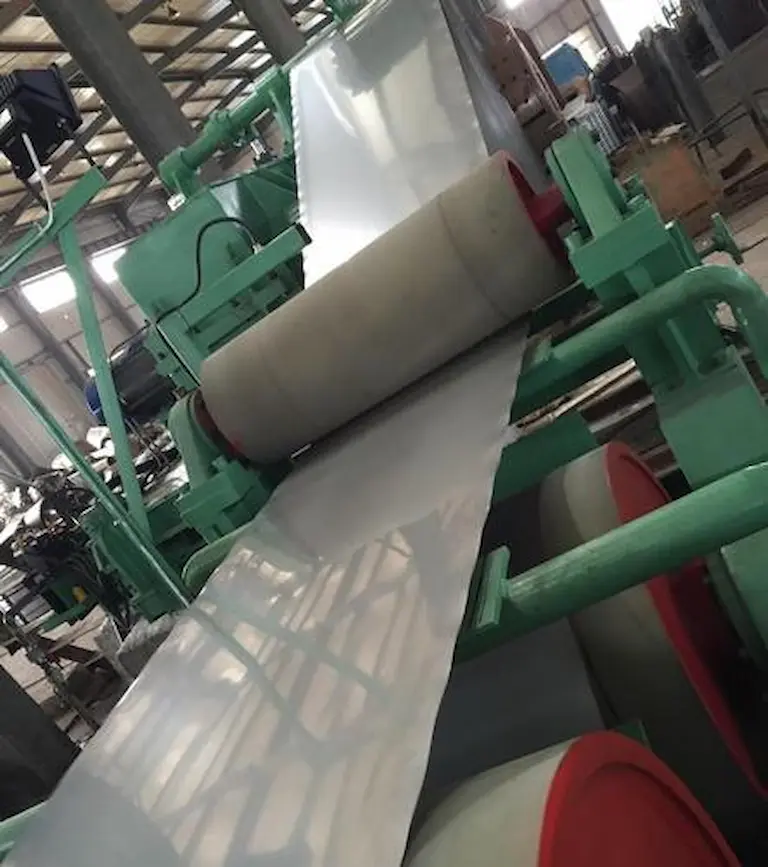
High hardness and resilience are obtained by cold work for structural applications. Kind 301 strip usually manufactures in several cold-rolling temperatures, up to a full hard 185 ksi, in addition to the rinded state 110 ksi. (758 MPa).
The specifications 301 stainless steel strip, which remain under ASTM, allow for various chemical composition and manufacturing changes that can lead to a wide variety of finished goods with various engineered material properties for particular applications.
301 stainless steel strips, readily in form and drawn, may not be correct in any application forming. In particular, this applies to those who need various training operations.
The material is commonly in use for subway trains, structural components of vehicles, trailers, vehicle trimmings, and car coverings. It is also in use in the manufacture of drainage materials, transport belts, and door frames for hurricanes. 301 stainless steel coil is flexible stainless steel and is suitable for a variety of uses like fat, fertilizer, sugar mill, cement, industry, shipbuilding, paper industry, pumping, automation, paints, steel industry, petrochemical chemicals, petrochemical products, oil & natural gas organization.
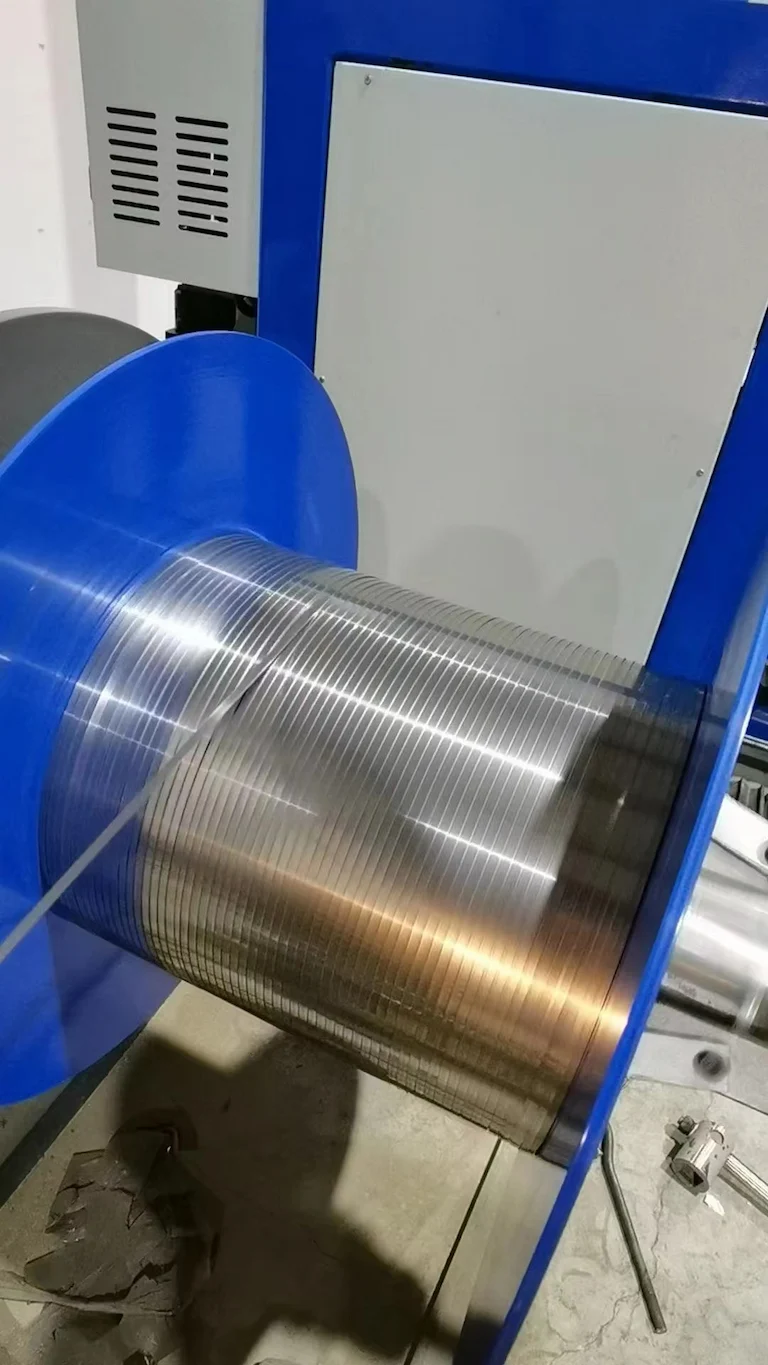
Diamond internal circular blades is mainly used to cut artificial crystal, single crystal silicon and precious ceramics and other material hard material, which has the advantages of small cutting slit, good cutting flatness and wear resistance.
Therefore, the substrate material of diamond 301 stainless steel knife put forward high requirements, at present, mainly use the thickness of 0.12mm sus301 stainless steel strip as the substrate of diamond stainless steel knife. Cold rolled strips are required to be flat and straight, without edge wave, and without warpage after stamping.
The specific requirements of the user are: Cold rolled strips hardness range: 490 ~ 530HV, preferably controlled at 500 ~ 525HV, elongation of 2.0% ~ 4.0% (transverse and longitudinal extension to be basically the same). Strip tensile strength in 1 650 ~ 1800MPa. usually we call this 301 stainless steel strip for 301 stainless steel 1/2 hard.
The key to the production of this 301 stainless steel strip is to control the Cold rolled strips plate shape and performance.
In this paper, we have optimized the best production process through repeated experiments, especially the cold rolling process, drawing and straightening process and stress relief annealing process, so that we can produce 301 stainless steel strips with good shape and excellent performance for diamond insert substrate stably.
SUS301 stainless steel strip with a thickness of 1.2mm and a width of 270mm is used, with a volume mass of about 1.5t.
| C | Si | Mn | P | S | Cr | Ni | N |
| 0.134 | 0.35 | 1.63 | 0.033 | 0.002 | 16.54 | 6.27 | 0.051 |
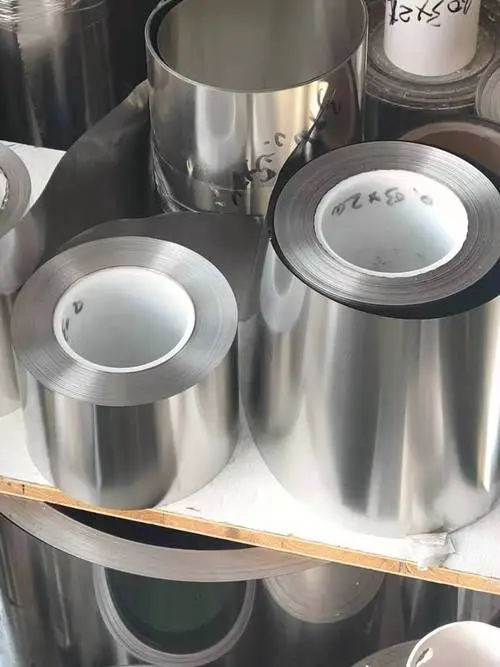
The performance of diamond insert matrix directly affects the service life of the insert, and the performance of Cold rolled strips determines the performance of diamond insert matrix, so the design of cold rolling process is especially critical. Through long-term cold rolled production and experiments, tensile tests and hardness measurements were conducted on products with different deformations, so that the work hardening curve of SUS301 stainless steel strip was drawn, and the cold rolling process of 301 stainless steel strip for diamond insert substrate was determined.
When the deformation rate is between 48% and 54%, the hardness of Cold rolled strips is between 480 and 520 HV, the tensile strength is between 1640 and 1760 MPa, the yield strength is between 1360 and 1480 MPa, and the elongation is between 5% and 8%. Considering that the strip mechanical properties will be increased in the post-step when tensile bending straightening and stress relief annealing are also required, the deflection rate of the final rolling process is controlled at 52% ± 2%.
Through continuous experiments, this paper adopts the production process of three rolling and two annealing, which can meet the performance requirements of the product and is more economical. In the 12-roller precision cold rolling mill, the 1.2mm blank is cold rolled to 0.12mm, and the process parameters such as rolling force, rolling tension, amount of string rolls, rolling speed, rolling temperature and deformation rate of the pass are controlled in the rolling process, so as to control the performance and board shape of Cold rolled strips.
If the plate shape of the cold rolled strips can not reach very flat, then in the process of processing into diamond inner circle blade, in the use of the process due to uneven force on the blade, easy to lead to be cut by the uneven size of the product, and even the blade is torn. Therefore, it is necessary to straighten the cold rolled strips by stretching and bending, so as to ensure the flat shape of Cold rolled strips.
According to the experience accumulated from many experiments, the elongation in this experiment is set between 0.8% and 1.5%, depending on the shape of the cold rolled strips, and the tension is set between 25000 and 40000N, so that the strip shape is flatter after drawing and straightening, and the I value shown on the plate shape measuring instrument is basically between 0 and 1.
The following figure is an actual example of this experiment, in which the process parameters are continuously adjusted, and the final set of the finished drawing and straightening process parameters are: elongation set to 1.0%, the actual display value of 1.06%. Tension is set to 28000N, the actual value is 28380N, the plate shape measuring instrument shows the I value basically in the middle of 0 ~ 1, stretching bending straightening treatment after the strip plate shape is very flat.
Stress relief annealing, also known as tension annealing, is a continuous heat treatment under a certain tension, which is a heat treatment method with temperature, time and tension. It can effectively remove the internal stress of the strip due to mechanical processing, deformation processing, etc., and reduce the deformation and cracking and other adverse effects during the subsequent processing.
Based on the effect of stress relief annealing on the shape of Cold rolled strips, two factors (annealing temperature and annealing speed), which have a significant effect on the strip properties, are considered in the design of the experimental program. The cold-rolled strip to 0.12 mm, first cut the edge, then after stretching and bending straightening treatment, and then separately take 2 meters of each strip after pulling and straightening, after stress relief annealing treatment.
Through the stress relief annealing experiment, when the annealing temperature of 300 ℃, annealing speed of 12.5m / min, the best mechanical properties of the annealed strip, its hardness of 512.4 HV, tensile strength of 1696.7 MPa, yield strength of 1531.7 MPa, elongation of 3.3%. After stress relief annealing 301 stainless steel strip performance is the final performance of the product, according to product performance requirements, combined with the results of stress relief annealing experiments to determine the best stress relief annealing process parameters: annealing temperature of 300 ℃, annealing speed of 12.5m / min, the unit tension is usually set to 20MPa (depending on the strip plate shape after drawing and straightening) . The whole coil strip according to: annealing temperature of 300 ℃, annealing speed of 12.5m / min, unit tension of 20MPa, after stress relief annealing treatment.
301 stainless steel coil properties are: the average hardness of the strip is 524.2HV, the average transverse tensile strength of 1690MPa, the average longitudinal tensile strength of 1695MPa, the average transverse yield strength of 1548MPa, the average longitudinal yield strength of 1510MPa, the average transverse elongation of 2.3%, the average longitudinal elongation of 3.5%. The average elongation is 2.3%, longitudinal elongation is 3.9%, and its performance meets the customer’s requirements.
Using the above cold rolling process, drawing and straightening process and stress relief annealing process, the production of 0.12mm thick 301 stainless steel strip plate shape flat, the strip flat on the platform for visual inspection, 301 stainless steel coil and platform completely fit without gaps. When slicing 252mm×252mm, the strip is flat and without warpage. When turning into diamond inner circle blade basic also very flat, will be flat on the platform for visual inspection, the strip still with the platform completely fit without gap, later in the production of diamond inner circle blade process, also not easy to deformation, not easy to blow up, blade life can reach about 1500 times, improve the service life of the blade, reduce production costs.
301 spring tempered stainless steel refers to 301 stainless steel that has been processed to increase its strength and elasticity. This is usually achieved through a process called cold working or cold rolling. The result is a material ideal for spring applications where high strength is required, such as in the manufacture of spring clips, washers, and other components.
301 stainless steel round bar is a versatile material used in a variety of applications due to its high strength and excellent corrosion resistance. Some of its common applications include:
Structural components in construction
Machine parts and components
Automotive components
Kitchen utensils and cutlery
Yes, 301 stainless steel is magnetic. While some stainless steel grades are non-magnetic, the 301 grade is not fully austenitic, which allows it to retain some ferromagnetic properties. This can be an advantage in applications where magnetism is required.
301 SS is an austenitic stainless steel with the following typical composition: 16-18% Chromium, 6-8% Nickel, and a maximum of 2% Manganese, 1% Silicon, 0.15% Carbon, and 0.045% Phosphorus, with the balance being Iron. This composition gives 301 SS its unique balance of properties, including strength and corrosion resistance.
301 stainless steel is known for its excellent ductility, making it easy to bend without fracturing. However, bending can harden the material due to work hardening, which can increase its strength but reduce its ductility. Therefore, care should be taken to avoid over-bending, which might lead to cracking.
The price of the 301 Stainless Steel Strip is influenced by several factors, including the global market conditions for raw materials, particularly nickel and chromium, production costs, and supply-demand dynamics in the market. Prices may also vary based on the specific dimensions and finishes of the strip.
There are many manufacturers of 301 Stainless Steel Strip worldwide, each offering different product qualities and pricing. Some of the leading manufacturers include Outokumpu, ArcelorMittal, Jindal Stainless, and Acerinox.
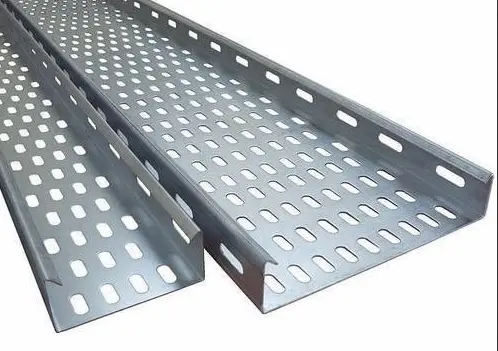
Stainless steel strips play a crucial role in the construction and functionality of stainless steel cable trays, offering both structural integrity and enhanced durability. Here’s how stainless steel strips are applied in this context:
By using stainless steel strips, manufacturers ensure that cable trays can withstand demanding conditions while providing secure and efficient cable management. This makes them a preferred choice for applications in industrial plants, power distribution networks, and environments where durability and safety are key.